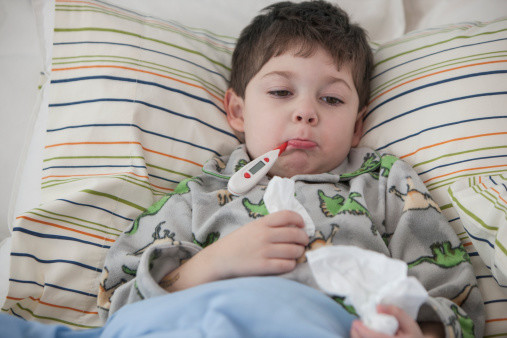 Scarlet fever in children can cause severecomplicationsPhoto: Getty Scarlet fever in children is caused by one of the varieties of group A streptococcus. This is a group of bacteria capable of destroying red blood cells in the blood. Getting into the mucous tissues, streptococcus begins to actively develop toxins. Blood carries poisonous substances and intoxicates the body.
Scarlet fever in children can cause severecomplicationsPhoto: Getty Scarlet fever in children is caused by one of the varieties of group A streptococcus. This is a group of bacteria capable of destroying red blood cells in the blood. Getting into the mucous tissues, streptococcus begins to actively develop toxins. Blood carries poisonous substances and intoxicates the body.
Scarlet fever in children: symptoms
Symptoms appear within 1-10 daysfrom the moment of infection. Mostly, children aged 3-10 years who attend child care facilities get sick. The pathogen is transmitted by airborne droplets, through toys and shared items. As a rule, streptococcus first colonizes the mucous tissues of the nasopharynx. Then the infection passes into the blood and spreads throughout the body. Microbes "work" in three directions:
- Toxic. Causes a rash on the skin, fever, neurological reactions, disruption in the endocrine and cardiovascular systems.
- Septic. It is characterized by catarrhal inflammations, purulent angina, necrotic changes in the mucous membranes.
- Allergic. There are lymphadenitis (enlarged lymph nodes), kidney complications, undulating temperature rises.
You can get infected not only from a sick child,but also from an adult carrier of streptococcal infection. Overcrowding of children's groups in kindergartens and schools contributes to the rapid spread of the disease. In children, the first symptoms of scarlet fever appear with a sharp jump in temperature. The numbers on the thermometer are close to 39 °. The child complains that it is difficult for him to swallow, he has a headache, and feels sick. Vomiting may occur. A characteristic sign is a bright red itchy rash that covers the entire body in a matter of hours. The rash thickens in the skin folds, forming red stripes (Past's lines). The stripes are localized in the elbows, armpits, and groin. The rash spreads from top to bottom, first covering the face, then the arms, legs, and other parts of the body. The baby's skin is very dry. The rash and Past's lines are distinctive symptoms of scarlet fever in a child, allowing an experienced doctor to make an unmistakable diagnosis. On the face, the rash is concentrated on the cheeks, forehead and temples. The skin of the nasolabial triangle is pale, without a rash. Another symptom typical of scarlet fever is a "flaming pharynx": a bright red throat with purulent plaque on the tonsils. The lymph nodes enlarge. At the beginning of the disease, the tongue is covered with a thick dirty white coating. Then the coating comes off the sides and tip, the tongue becomes brightly colored and covered with small papillae - the so-called "raspberry tongue". After 3-7 days, the rash disappears, leaving no pigmentation. The skin peels heavily: the child's palms and feet are covered with large scales, starting from the fingertips. The neck, ears, and torso are covered with particles similar to bran. 7 days after the onset of the disease, the immune system accumulates antibodies - special compounds that can fight infection and bind toxins. The symptoms of the disease subside, and the child begins to recover. Currently, severe scarlet fever is rare. Most often, the disease is mild or moderate. The child can be treated at home. At the first symptoms of infection, it is necessary to call a doctor to start treatment on time and avoid complications. Read also:









